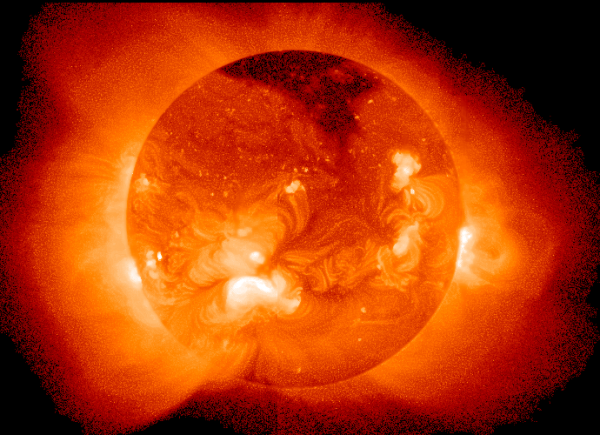Harvesting Hydrogen Fuel with Solar Energy
| Marc Maligalig | | Sep 25, 2014 06:32 PM EDT |
(Photo : Wikimedia Commons)
Michael Grätzel and his team at the Laboratory of Photonics and Interfaces at École polytechnique fédérale de Lausanne in Sweden have developed dye solar cells that imitate photosynthesis in plants and techniques for making fuels, such as hydrogen, through solar water splitting.
Like Us on Facebook
To be able to generate hydrogen fuel, the team would either use electricity-generating cells with an electrolyzer that divides the water molecules, or use photoelectrochemical cells that split the water directly into oxygen and hydrogen when exposed to light.
By using the first aforementioned method, Jingshan Luo, Grätzel's post-doctoral student, and his colleagues were able to use the device to convert hydrogen 12.3 percent of the power by the Earth's nearest star on perovskite absorbers, a compound which could be found in the laboratory from simple materials, like those used in the common car batteries, forgoing the requirement of using rare-earth metals to produce usable hydrogen fuel.
The high efficiency of the process would make the technique a rival of the other methods used to convert solar energy, and the number of advantages would put the new approach in the lead.
"Both the perovskite used in the cells and the nickel and iron catalysts making up the electrodes require resources that are abundant on Earth and that are also cheap," explained Jingshan Luo. "However, our electrodes work just as well as the expensive platinum-based models customarily used."
On the other hand, converting solar energy into hydrogen makes the storage of the energy possible, which deals with one of the biggest drawbacks met by renewable sources of power: the need to use the electricity as soon as it is generated.
"Once you have hydrogen, you store it in a bottle and you can do with it whatever you want to, whenever you want it," said Michael Grätzel. Such a gas can indeed be burned - in a boiler or engine - releasing only water vapor. It can also pass into a fuel cell to generate electricity on demand. And the 12.3% conversion efficiency achieved at EPFL "will soon get even higher," promised Grätzel.
Tagsrenewable energy, Hydrogen Fuel, Hydrogen, Hydrogen power, solar power, solar energy, Sun, Star, Sunlight, Hydrogen storage
©2015 Chinatopix All rights reserved. Do not reproduce without permission
EDITOR'S PICKS
-

Did the Trump administration just announce plans for a trade war with ‘hostile’ China and Russia?
-

US Senate passes Taiwan travel bill slammed by China
-

As Yan Sihong’s family grieves, here are other Chinese students who went missing abroad. Some have never been found
-

Beijing blasts Western critics who ‘smear China’ with the term sharp power
-

China Envoy Seeks to Defuse Tensions With U.S. as a Trade War Brews
-

Singapore's Deputy PM Provides Bitcoin Vote of Confidence Amid China's Blanket Bans
-

China warns investors over risks in overseas virtual currency trading
-

Chinese government most trustworthy: survey
-

Kashima Antlers On Course For Back-To-Back Titles
MOST POPULAR
LATEST NEWS
Zhou Yongkang: China's Former Security Chief Sentenced to Life in Prison

China's former Chief of the Ministry of Public Security, Zhou Yongkang, has been given a life sentence after he was found guilty of abusing his office, bribery and deliberately ... Full Article
TRENDING STORY

China Pork Prices Expected to Stabilize As The Supplies Recover

Elephone P9000 Smartphone is now on Sale on Amazon India

There's a Big Chance Cliffhangers Won't Still Be Resolved When Grey's Anatomy Season 13 Returns

Supreme Court Ruled on Samsung vs Apple Dispute for Patent Infringement

Microsoft Surface Pro 5 Rumors and Release Date: What is the Latest?










